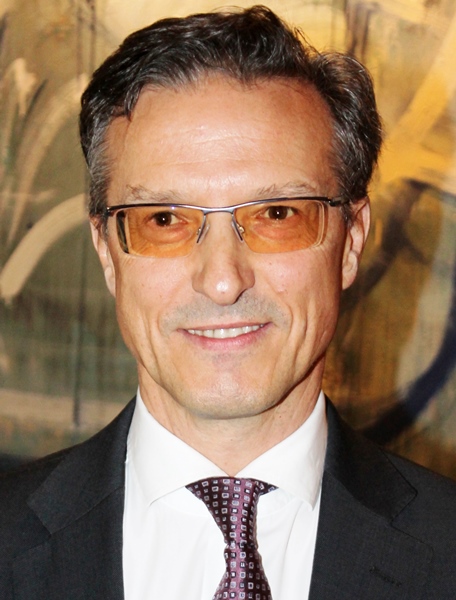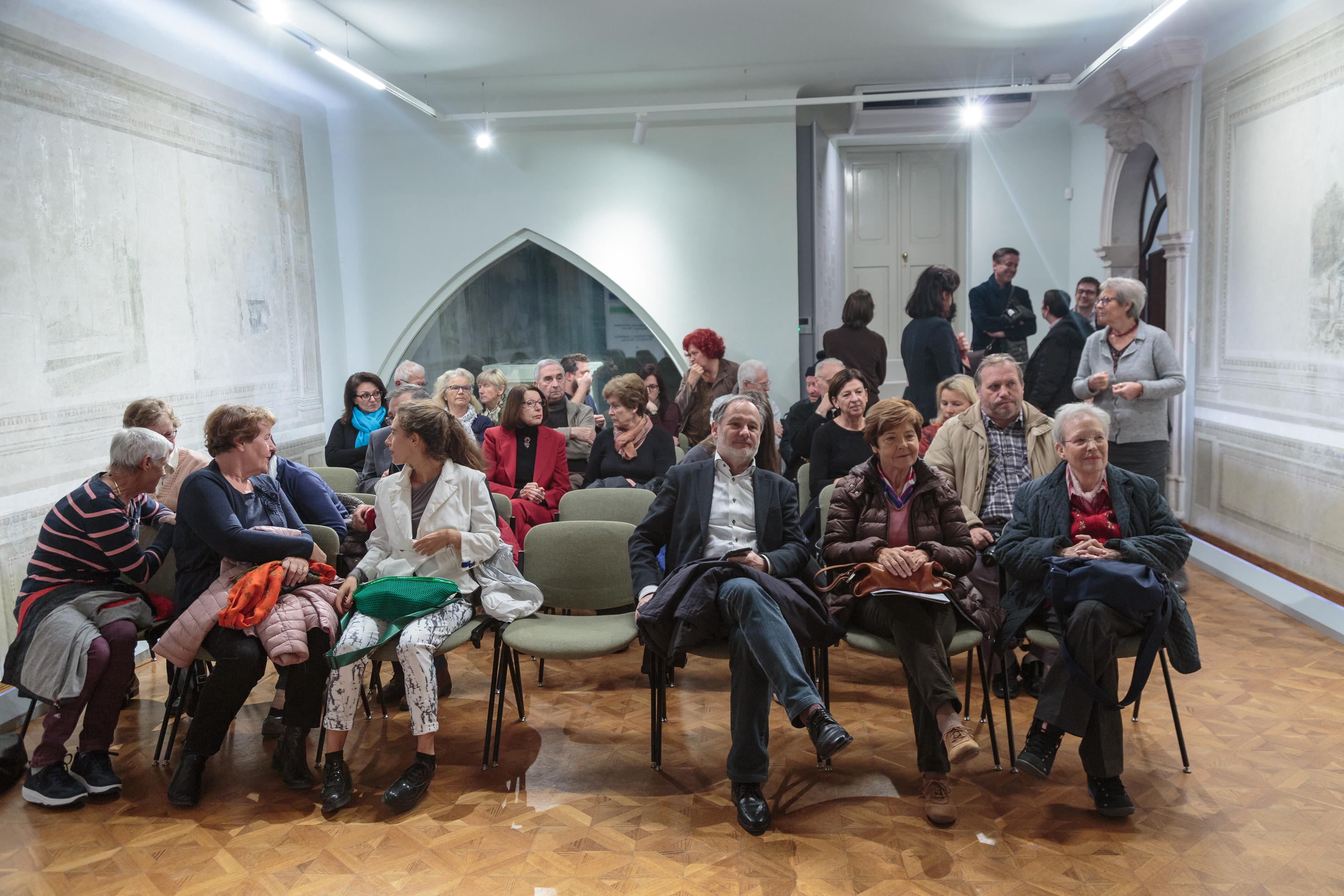Casa Tartini ristrutturata è stata presentata ai soci della Comunità

Comunicato incontro con il deputato Žiža
12/01/2019
Presentata la pubblicazione sul faro di Pirano
12/04/2019
Due settimane fa il Comune di Pirano, capofila del progetto “tARTini: turismo culturale all’insegna di Giuseppe Tartini”, ha presentato ufficialmente i risultati del progetto nella ristrutturata Casa Tartini. Venerdì 29 novembre 2019, la Presidente della Comunità degli Italiani “Giuseppe Tartini” e vicesindaco del Comune di Pirano, Manuela Rojec, ha invitato all’apertura della sede i soci del sodalizio e altri amici. Presenti pure il Presidente della Comunità Autogestita della Nazionalità Italiana di Pirano, Andrea Bartole, e Duška Žitko, conservatrice del Museo del mare “Sergej Mašera” di Pirano.
Bartole ha presentato brevemente il lato economico del progetto, infatti ogni partner deve investire il 15% del valore totale del progetto, e la Comunità ci è riuscita grazie alle forze comuni.
Duška Žitko ha sottolineato che il giorno dell’apertura ufficiale ha ricordato ai presenti ciò che da tempo le stava a cuore di dire.
Ho ricordato a tutti i presenti che bisogna dare il giusto posto a Pirano e a Tartini, il posto che meritano. Tutti noi che lavoriamo in un ambito culturale ci sforziamo, ma ancora non abbiamo fatto il passo definitivo per arrivare dove vogliamo.
Il Museo del Mare gestiva finora una stanza in Casa Tartini, mentre ora ne gestirà tre. Nell’ex stanza memoriale saranno custoditi i più grandi cimeli del compositore, così la Duško ha proposto di chiamarla “stanza dei tesori”.
Al suo interno verranno conservati manoscritti, trattati di matematica e di musica, alcune lettere, la maschera mortuaria… Si tratta di oggetti importanti che conserviamo solo noi a Pirano.
Il violino appartenuto a Tartini ha trovato invece nuova sistemazione nella Sala dei fiori che ora sarà dedicata solamente a questo prezioso strumento. Quando i visitatori entreranno saranno accolti anche dalla musica. Un’altra stanza al primo piano sarà invece dedicata agli oggetti dell’Ottocento.
Manuela Rojec ha sottolineato che lo scopo principale del progetto era quello di poter aprire la casa ad un pubblico più vasto, perciò gli uffici amministrativi hanno trovato nuovi spazi in un’altra sede, mentre Casa Tartini rimane per tutti coloro che vogliono portarvi anche dei contenuti.
Al progetto, finanziato dal programma Interreg Italia-Slovenia, hanno partecipato sei partner: il Comune di Pirano, come capofila, la Comunità degli Italiani “Giuseppe Tartini”, il Festival Lubiana, il Segretariato dell’iniziativa centroeuropea di Trieste, il Converservatorio “Giuseppe Tartini” di Trieste e l’Università di Padova.
Le fotografie dell’evento.
—
Obnovljeno Tartinijevo hišo predstavili še članom skupnosti
Potem ko je Občina Piran pred štirinajstimi dnevi v obnovljeni Tartinijevi hiši uradno predstavila rezultate projekta tARTini – Kulturni turizem v znamenju Giuseppeja Tartinija, je podžupanja in predsednica Skupnosti Italijanov Giuseppe Tartini, Manuela Rojec, na odprtje hiše povabila člane skupnosti in druge prijatelje. Družbo sta ji delala predsednik Samoupravne skupnosti italijanske narodnosti Piran, Andrea Bartole, in kustosinja Pomorskega muzeja Sergej Mašera, Duška Žitko.
Bartole je na kratko predstavil ekonomsko plat projekta, saj je morala italijanska skupnost kot eden izmed partnerjev priskrbeti 15 odstotkov celotne vrednosti, kar jim je s skupnimi močmi tudi uspelo.
Duška Žitko je izpostavila, da je vsem prisotnim na uradnem odprtju položila na srce tisto, kar tako njo kot ostale že dolgo tišči.
Povedala sem jim, da moramo Piranu in Tartiniju zagotoviti mesto, ki jima pripada. Za to se trudimo vsi, ki delujemo na področju kulture, a bistvenega koraka, ki bi nas pripeljal tja, kamor želimo, še nismo naredili.
Pomorski muzej je že prej skrbel za eno od sob v Tartinijevi hiši, v njenem novem življenju bodo pod njegovim okriljem tri. V nekdanji spominski sobi bodo po besedah Žitkove shranjene največje dragocenosti velikega skladatelja. Vsled temu predlaga, da bi sobo poimenovali “zakladnica”.
V njej bodo Tartinijevi rokopisi, raziskave, matematične ter o glasbeni teoriji, nekatera pisma, njegov notni črtalnik, posmrtna maska … Vse to so dragocenosti, ki jih nikjer na svetu ni, samo mi jih imamo.
Tartinijeva violina bo svoj prostor dobila nadstropje višje, v sobi s cvetličnimi dekoracijami, ki bo namenjena samo njej. Ob vstopu vanjo nas bo preplavila tudi njena glasba. Ker pa v zakladnici ni prostora za vse zaklade, bo še ena soba v prvem nadstropju namenjena gradivu 19. stoletja.
Manuela Rojec je poudarila, da je bil osrednji cilj projekta odpreti Tartinijevo hišo širši javnosti, zato so vse pisarne skupnosti preselili, prostori pa so zdaj na voljo vsem, ki bi jim želeli dati vsebino.
V projektu, ki je sofinanciran iz programa Interreg Italija – Slovenija, je sodelovalo šest partnerjev; nosilec projekta Občina Piran, Skupnost Italijanov Giuseppe Tartini in Festival Ljubljana na slovenski strani ter Konservatorij Giuseppe Tartini iz Trsta, Sekretariat CEI (Central European Initiative) in Univerza v Padovi na italijanski strani.
Fotografije dogodka.

